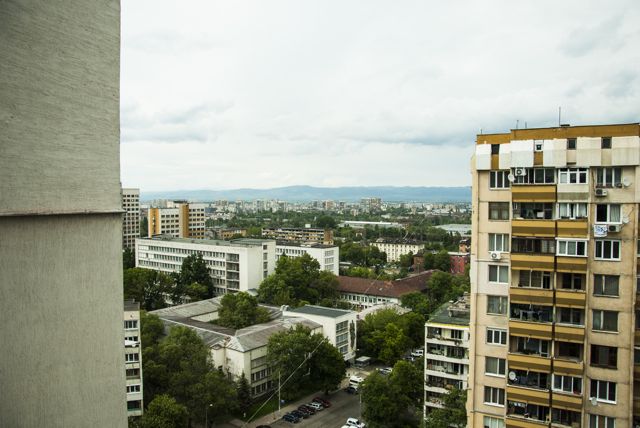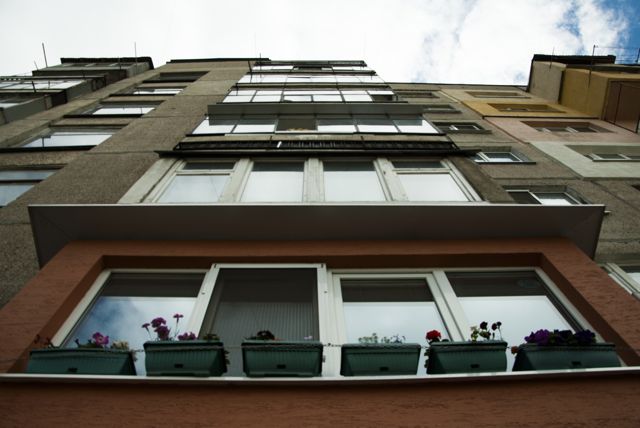Pictures - the author
Polina Spartyanova
The global housing industry puts end buyers in the most disadvantageous position. The whole cycle involving entrepreneurs, banks, building contractors, brokers, and buyers, has been designed so that modern people need to work all their life in order to repay their housing loans. GRReporter sought the opinion of architect Delcho Delchev who after a four-year practice, just before the onset of the Crisis, set up a partnership called ‘Transformatori’ (meaning ‘transformers’) with colleagues who shared his beliefs to counteract the lack of professional, civil, and investment interest in public spaces. Mr. Delchev is the author of a dissertation thesis on the ‘Models for Development of Concrete Panel Housing Complexes’ at the Institute for Art Studies, in which he assesses from a modern perspective the problems and the potential of housing complexes with concrete panel buildings and develops some positive and negative scenarios for their further development.
What is typical of the construction of housing complexes in Bulgaria during the socialist period?
During the socialist period, housing construction went through different stages following the political, economic, and social interests of the day. There were projects of different scales, some of which proved to be successful and still have their benefits nowadays, while others were unsuccessful and seem to be on the edge of utopian ideas of architects and city planners. It is interesting to see the assessment which the contemporary housing market gives them, too. Some complexes in the capital city, for example, ‘Iztok’ and some parts of ‘Lozenets’, have not lost any of their value. On the contrary, ‘old brick’ constructions are appreciated better than ‘new construction’. This is not the case with housing complexes like ‘Lyulin’, ‘Nadezhda’, or ‘Obelya’ where constructions were predominantly built from concrete panels. Obviously, it is not the construction system that matters in this case, but their scale and proximity to the centre of the city, as well as transport and public services, and above all, the social atmosphere in these neighbourhoods. The most crucial and complex problems seem to be those of housing complexes which were built as a result of the reckless expansion of urban areas upon agricultural fields. In addition to being in conflict with modern urban ethics, similar investment ‘decisions’ can regularly be seen even in modern towns and cities which continue to expand horizontally instead of becoming more compact. As a result, a lot of new housing complexes remain with underdeveloped infrastructure, as did some housing complexes which were built earlier.

In conclusion, I would point out a major mistake from Bulgaria’s socialist period – ill-scale industrialisation which triggered hectic construction activity in urban peripheral zones and people’s migration from small towns and villages to major towns and the capital city. Bulgaria went through several housing crises, the mortgage crisis being an example, too, yet they were usually the consequence of natural disasters or military conflicts, rather than planned political or economic activities.
Why did concrete panel construction spread so rapidly over the territory of the country with 30 per cent of Bulgarian population living in those concrete blocks of flats?
A short list of some advantages of concrete panel construction will probably give the answer to the question, or do so at least partially. Despite the prevailing negative attitude, we should bear in mind that construction with prefabricated elements is increasing and unlike other countries, the housing sector and the construction of high-rise buildings in Bulgaria do not make use of its advantages.
Prefabricated construction elements were manufactured in plants in a controlled environment, rather than on the construction site. Housing construction plants used to be similar to 3D printers of concrete elements. The evolution of 3D printing and the crisis in the construction sector have shifted the focus of attention on cutting-edge construction technologies. In addition, there is the time factor – buildings were constructed rapidly, under the pressure of short deadlines typical of planned economy. If the construction of a new block of flats begins near your home, tens or hundreds of families will live as if on a construction site with all its dust and noise for at least a year or two. In contrast, prefabricated elements construction will reduce the period of inconvenience to two or three months only!
